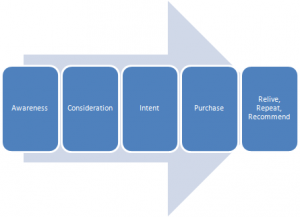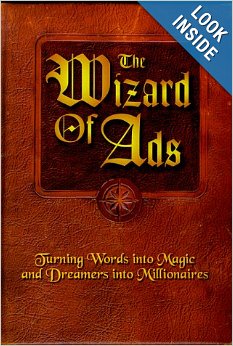The Wizard Of Ads Answers That With More Questions About Your Business
“When will my ads start working?” is one of the most commonly asked questions by new advertisers.
Roy Williams, author of The Wizard of Ads, cites and defines the following factors when determining the length of the “ramping up period” an ad campaign will require before you begin to see results:
1. Product Purchase Cycle – how often is the customer in the market for this product?
2. Share of Voice – what percentage of all the marketing done in your business category is yours?
3. Impact Quotient of Message – how convincing is your message?
 Product Purchase Cycle
Product Purchase Cycle
Because we eat more often than we redecorate, ads for restaurants will yield much faster results much faster than ads for carpet or furnishings.
The longer your product purchase cycle, the longer you’ll have to invest in advertising before you feel like it is working. The ramping up period usually takes 20-40% of the product purchase cycle. Meaning if your business sells a product or service that a customer buys only once every five years, then it will likely be 1 to 2 years in to the advertising plan when it really begins to pay off.
Share of Voice
 Generally speaking, this is the size of your ad budget compared to the collective ad budget of your competitors.
Generally speaking, this is the size of your ad budget compared to the collective ad budget of your competitors.
However, other factors impact this as well. This SOV calculation must include such things as visibility/accessibility offered by your location, history of consistent advertising, word-of-mouth recommendations by customers. If these things are strong, they bolsters your Share of Voice in the marketplace; if not, then the size of the budget to offset deficiencies in these areas becomes even more important.
Impact Quotient of Message
 Keep in mind that your customer won’t be hearing your message alone. They’ll be comparing – consciously if they are currently in the market to buy and subconsciously if they’re not ready to buy – your message to the messages of your competitors.
Keep in mind that your customer won’t be hearing your message alone. They’ll be comparing – consciously if they are currently in the market to buy and subconsciously if they’re not ready to buy – your message to the messages of your competitors.
Urgent messages making a “limited time offer” will definitely elevate the I-Q for those customers currently in the market for that product or service; but it is likely to actually lower the Impact Quotient for customers who are not ready to buy. The only thing the not-yet-ready customer is likely to remember from such ads is “never to buy from your company unless you are having a sale”.
Long term, the most valuable ad is the one that delivers a message powerful enough to be remembered even by people who are not currently in the market to for your product or service.
